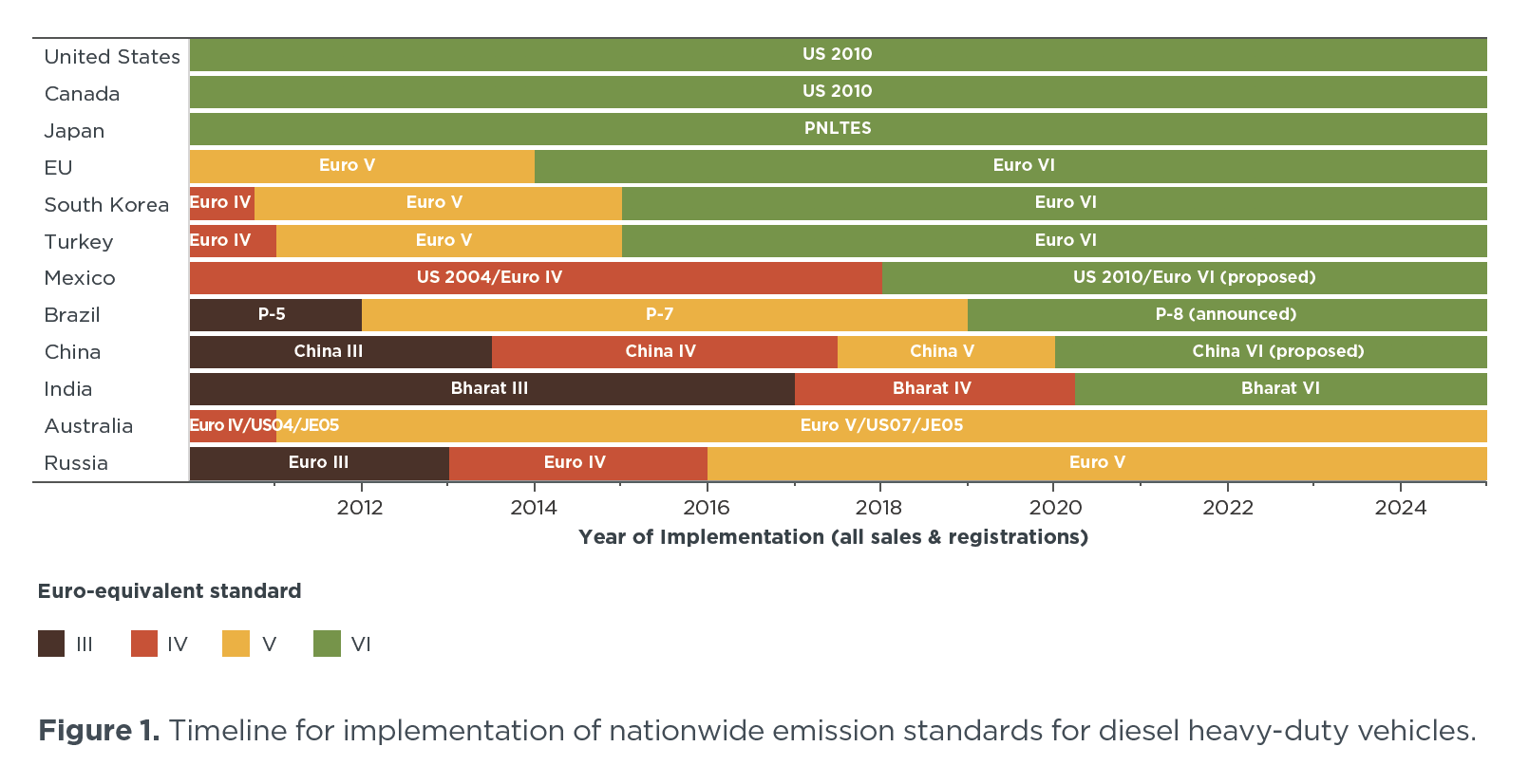Cost-benefit analysis of Brazil's heavy-duty emission standards (P-8)
Briefing
Effect of P-8 standards on bus system costs in Brazil
Brazil has controlled harmful pollutant emissions from heavy-duty vehicles (HDVs), including trucks and buses, through a series of progressively more stringent vehicle emissions standards put in place since 1994 that apply to new vehicles sold nationwide. These so-called PROCONVE (Programa de Controle da Poluição do Ar por Veículos Automotores) standards have followed the European precedent for emission limits and certification requirements. The most recent standard in Brazil, P-7, was introduced in 2012 and is equivalent to Euro V standards.
But Brazil has yet to adopt the most recent Euro standards. The Euro VI standards, which took effect in the European Union (EU) in 2013, have achieved a 90% reduction in fine particle (PM2.5) and nitrogen oxide (NOX) emissions compared to Euro V. Euro VI standards and their equivalent in other markets are the current best practice for controlling local air pollution from trucks and buses. Such standards have now been adopted or proposed in most major vehicle markets, including the United States, Canada, Japan, the EU, South Korea, Turkey, Mexico, China, and India (Figure 1). Additionally, Latin American cities such as Santiago and Cartagena have shifted their bus purchases to Euro VI. Yet Euro VI buses are not entirely foreign to Brazil: Scania already produces Euro VI engines and trucks in Brazil for export to Europe, Asia, and Latin America.
The adoption of Euro VI-equivalent tailpipe emissions standards in Brazil—currently being considered for implementation in 2019—would likely lead to lower bus system costs in the country; this is because the fuel-efficiency benefits more than offset the costs of more advanced emission controls needed to meet the more stringent standards. These benefits are in addition to a 90% reduction in harmful local air pollutants, better air quality, and the prevention of 74,000 premature deaths nationwide.

